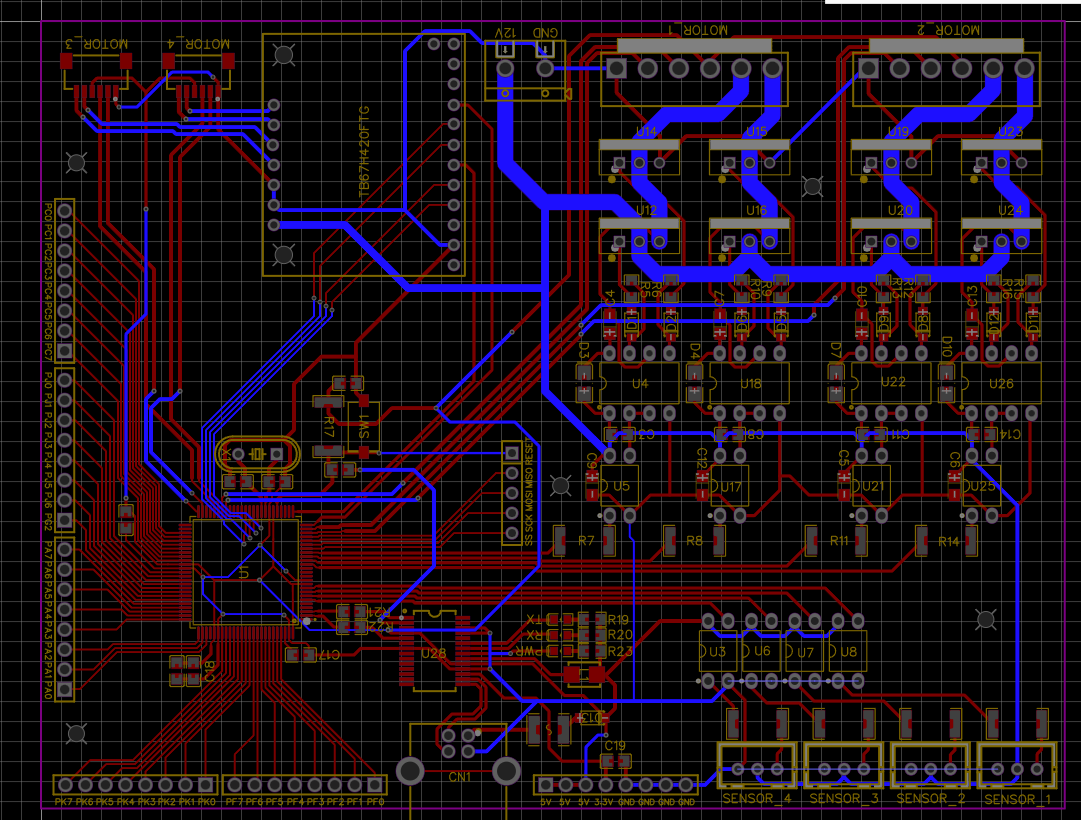This is my first time working on a PCB microcontroller board.
I'm working on a project that involves the control of several DC motors with encoders, and I've opted to make my own microcontroller board with integrated H bridge drivers using IRF540 N-channel MOSFETs. The maximum current draw for the motors which I want to use (FIT0185 DFROBOT) is 7 A, so I expect I'll only be drawing on average about 5 A. I'm using an ATmega2560-16AU as the brains.
My question is whether the traces between the power supply connector, MOSFETs and motor connector are sufficiently wide, as I went with 2 mm width.
I calculated using Saturn PCB Design Toolkit, and for 7 A, the recommended trace width is about 3.5 mm, which seems way too big. When I calculated the amps that a 2 mm wide trace can withstand, it gave me around 5 A.
I'm thinking of setting the 2 mm traces as exposed copper and later adding solder to them. How much will this help? Or should I try to squeeze 3.5 mm traces?
Also, I want to control the speed and position of these motors accurately, but I'm concerned that the trace lines from the MCU to the PWM inputs and from the encoder outputs to the MCU are way too lengthy and that the signals might be affected. I've marked them on the images below. Trace width for PWM in is 0.4 mm and for encoder out is 0.5 mm.
Thank you in advance!
EDIT
I'll add a link to the motors which I'll be using (https://www.tme.eu/ro/en/details/df-fit0185/dc-motors/dfrobot/fit0185/). I forgot to add that the operating current for these motors is 0.35A which is absolutely manageable, however the stall current is 7A.




